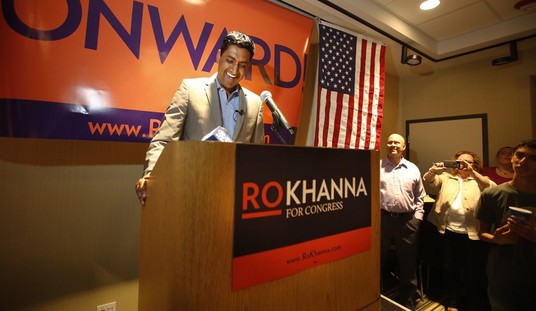As the nation struggles with the idea of body cameras on police officers there are plenty of other places where some George Orwell style surveillance state technology may come in handy. One example of this may be found on the nation’s college campuses. Since our colleges are no longer institutions of learning and preparation for productive careers so much as they are factories churning out the next generation of liberal activists and community organizers, a new generation of problems have beset them. Even though each and every event must be squeezed through the sieve of liberal politics, we’ve seen too many incidents of violent and/or bias driven crimes. Or, in come cases, the perception of such crimes.
Kevin Williamson delves into these problems with an analysis of some recent events at George Washington University.
George Washington University (“the Harvard of safety schools,” as alumnus Dan Foster calls it) has a swastika problem. This goes back a ways. In 2007, a Jewish student, Sarah Marshak, reported that her dorm-room door had been defaced with swastikas, and she complained that the university was doing too little to investigate. But the university was in fact investigating thoroughly — it had, ridiculously enough, gone as far as consulting the FBI — and its sneakily hidden surveillance cameras recorded the vandal in action.
No points for guessing that the malefactor was Sarah Marshak…
Fake hate crimes, like false rape accusations, now are a regular part of college life, and they serve the same purpose: a pretext for terrorizing unpopular individuals and organizations. The hoaxers rarely if ever endure any serious punishment. Punishment is reserved for the innocent.
As with any other institution where large numbers of people are compressed into a small area, there are going to be problems. Real crimes do happen and people need to be protected. But as Williamson points out, when the atmosphere is so charged with partisan politics, some people are going to try to put their thumb on the scale and stage events to drive their point home. This is an extremely serious situation on two different levels. First, every time you fake a crime you detract from and cast doubt on the actual crimes which do take place. And second, there is an almost total lack of accountability for those perpetrating these hoaxes.
Of course, not everything is a hoax and some of the incidents mentioned above are more complicated than first meet the eye. The most recent incident involving a swastika at GWU saw a Jewish student expelled after posting a Hindu version of the symbol which predates the Nazis by a long way and carries a completely different meaning. Was that a hoax? A provocative act? A hate crime? Or, as the student insisted, was it an attempt to take the symbol back from the haters and defuse tensions? As I said… it’s complicated.
Somebody at Duke University hung a noose from a tree this month. After a very brief investigation the authorities announced that they had identified the person who did it and that they had confessed. But because of privacy concerns they can’t release the name of the culprit nor any details about them. Now we’re facing the same conundrum I mentioned above. Was this a hoax? Or was it, as Williamson calls them, a genuine free-range national-socialist graffitist? We won’t know until such time as the perp is identified, but The Daily Caller points out why this question is hanging over everyone’s collective heads at Duke.
While Duke’s students rush to judgment, it must be considered a possibility the noose wasn’t intended as a racist threat, but rather as a hoax. Fake hate crimes have occurred many time on college campuses in years past.
In 2004, a professor at Claremont McKenna College was convicted of filing a false police report after she spray-painted racist slogans on her own car and then blamed it on students. At UC San Diego in 2010, an anonymous student who claimed to be a minority apologized for leaving a noose hanging on campus. In 2012, a black student at the University of Wisconsin-Parkside confessed to police that she had left multiple nooses around campus and fabricated a “hit list” against herself and several other black students.
Nearly everyone seems to have a reason for hating the idea of cameras monitoring the activities of people as they move through the public square, but we live in an era where such technology is quickly becoming the only path out of these quagmires. The case of the student who vandalized her own dorm room door at GWU was only found out because there were hidden cameras in the halls. How much pain could be avoided at Duke if there was video footage available of that noose being placed in the tree the very next morning? It doesn’t erase the problem of someone actually doing it, but at least we’d know which problem – real or fabricated – we were dealing with. If there were more cameras at UVA a couple of years back, could most of the entire “Jackie” hoax have been avoided?
I”m not talking about putting cameras inside of dorm rooms, bathrooms or showers. The normal lines of reasonably expected privacy have to be observed. But you have no true expectation of privacy once you wander out in public. Our college campuses are deteriorating into a very bad (and extremely expensive) joke. Getting some real time video of everything that happens in the public areas of campuses may sound repugnant to privacy advocates, but it’s almost certainly legal and will solve more problems than it causes.








Join the conversation as a VIP Member